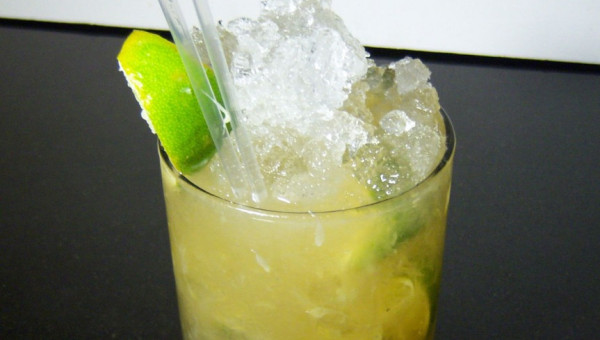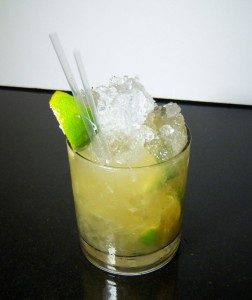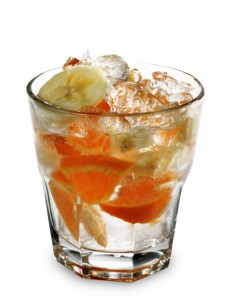Could Cachaça be the next big thing?

 It never ceases to amaze me that many of my friends have never heard of the main ingredient in some of the UKs most popular cocktails, including the Caipirinha cocktail and the Batida. The spirit in question, of course, is Cachaça, the Brazilian spirit made from fermented sugar cane, which has been creating a bit of a ripple throughout the drinks industry in recent years. The purchase of the popular Brazilian Cachaça brand Ypióca, which was announced last May, for the sum 300 million pounds, has got many industry insiders considering whether Cachaça could well be the next rum or is it destined to remain a strictly Brazilian concern, with its overseas identity remaining as primarily a niche ingredient, to be found only in Cachaça cocktails like the Caipirinha cocktail. Indeed, Cachaça, has always experienced a big branding challenge, particularly in America, as legally it could be classed only as Brazilian Rum. This has recently been resolved and Cachaça has now taken hold of its own identity.
It never ceases to amaze me that many of my friends have never heard of the main ingredient in some of the UKs most popular cocktails, including the Caipirinha cocktail and the Batida. The spirit in question, of course, is Cachaça, the Brazilian spirit made from fermented sugar cane, which has been creating a bit of a ripple throughout the drinks industry in recent years. The purchase of the popular Brazilian Cachaça brand Ypióca, which was announced last May, for the sum 300 million pounds, has got many industry insiders considering whether Cachaça could well be the next rum or is it destined to remain a strictly Brazilian concern, with its overseas identity remaining as primarily a niche ingredient, to be found only in Cachaça cocktails like the Caipirinha cocktail. Indeed, Cachaça, has always experienced a big branding challenge, particularly in America, as legally it could be classed only as Brazilian Rum. This has recently been resolved and Cachaça has now taken hold of its own identity.
The vast majority of Cachaça is produced in Brazil and the spirit is typically between 38% and 48% alcohol by volume. Cachaça is made from fresh sugarcane juice that is fermented and distilled and some of the most popular brands of the spirit include; Volupia, Serra Limpa, Leblon and Anisio Santiago. Outside Brazil Cachaça is mainly used as an ingredient in cachaca cocktails, including the Abaci Batida, the Peach Batida, the Caipirinha cocktail and the Caju Amigo. An incredible 1.5 billion litres of Cachaça is consumed in Brazil every year.
Cachaça, similar to other spirits such as Rum and Tequila has two varieties, unaged (white) and aged (gold) White Cachaça is usually bottled immediately after distillation and tends to be cheaper. It is often used to prepare Cachaça cocktails such as the classic Caipirinha cocktail and other cocktail recipes in which Cachaça is an ingredient. Dark Cachaça, usually seen as the “premium” variety, is aged in wood barrels and is meant to be drunk straight. Its flavour profile will be influenced by the type of wood the barrel is made from.
The purchase of Ypióca was only the latest of a series of Cachaça acquisitions by some of the major players in the drinks industry, although this was undoubtedly the biggest in terms of price and scale and Diaego have obviously taken a big bet on the brand and category in general. The previous year Campari had snapped up popular Cachaça brand Sagatiba for a reported £16 million and there are rumours of more acquisitions in the pipeline. When analysing these purchases, it is important to look at 2 factors. Firstly, the big players are obviously desperate for a slice of a category that has huge growth potential outside Brazil. Incredibly, only 1% of Cachaça is exported from Brazil, and a lot of this goes to Germany where, for some strange reason, Cachaça has already gained a strong foothold in the market. Having proven an extremely popular and fashionable spirit in its home nation, there are obviously signals that Cachaça could be the next big thing in the world of international spirits.
Secondly, Cachaça is very strongly connected with Brazil and its culture and one must note that, in the next few years, we have the 2 most prolific sports events in the world bound for Rio ~ the World Cup in 2014 and the Olympics in 2016. The world is surely about to go a little “Brazil-mad” and no doubts this will be good news for many products with strong and clear Brazilian heritage.
The next few years will be pivotal in how the marketing minds behind the major Cachaça brands bring the drink to the attention of the world and in how they push to bring a taste of Brazil to international bars and clubs. Possibly a question for the not-so-distance future will be whether the Caipirinha cocktail is destined to be the new Mojito!!


